Results 3,431 to 3,440 of 12096
Thread: Anandtech News
-
11-20-13, 12:00 PM #3431
Anandtech: Gaming Immersion: OverclockersUK Launch Infinity Emperor Chair and Worksta
For any of our readers that do not frequent computer forums, one of the big draws to various places on interwebs is the unique and custom builds that individuals do to their home PC.  This can vary from new case design, exotic cooling, or tying into a theme (Iron Man) or idea.  Much of the draw is often the story of design in ‘build logs’, where these ‘modders’ report on their successes, failures, ups and downs with the system.  I am not the type to follow build logs, but I often look at the end product with wide eyes, wondering if the individual did commissions.  Some of these builds are all about making an awesome PC or workstation, and some focus on immersion.
So when a retailer comes out with a custom built system (either in-house or via an ODM/OEM) that attempts to offer extreme immersion, my eyes are drawn.  The main one of late to have gathered steam is the Oculus Rift.  As a tester, a writer, and a history in compute, having access to a powerful system that is easy on the eyes, gets the job done and offers multi-monitor is a big plus.  If it doubles up as a gaming experience, then my productivity goes out the window.  Insert the OverclockersUK Infinity Emperor, an offshoot of the 8Pack system launch we recently attended:

First of all, the chair: measuring in at 154x117x193cm, and weighing in at 110kg (225lb, can support gamers up to 250lbs), is designed in a scorpion style via the monitors that are held from the rear.  The seat (and frame) is built upon powder coated Canadian steel (the brackets are 4.7mm thick), using a microfiber cloth seat cover.  The seat is covered by a 5 year warranty in itself, the monitor bracket can support up to three 24” monitors via VESA or a single 30”, and the seat and parts are height adjustable.
 As shown on the picture above, the idea is to be suitable for gamers using keyboard/mouse, as well as a workstation.  Lights are added to detract some glare from the monitors, and the seat is pre-fitted with BOSE speakers both around the seat and under the chair in a 2.1 configuration.  The chair also acts as a USB hub, giving four USB ports, as well as HDMI throughputs for the monitors.  The chair by itself is £4999.99 inc tax, which translates as $6737 pre-tax state side.
The main selling option of the Infinity Emperor is with the PC attached, and monitors.  For the full asking price of £9999.99 inc tax ($13657 pre-tax), the chair comes with three ASUS 24” 144Hz LED monitors (VG248QE) and a pre-overclocked, fully watercooled system with the following specifications:
- Lian Li D600WB case, Brushed Aluminum
- Intel Core i7-4770K, overclocked to 4.7 GHz, watercooled
- ASUS Maximus VI Formula motherboard
- Geil Potenza 16GB (2x8GB) 2133 MHz C10
- 2 x AMD Radeon R9 290X 4GB in Crossfire, watercooled
- Full custom watercooling loop, Mayhems X1 Purple Fluid
- SSD: Samsung 840 Evo 250GB
- HDD: Seagate Barracuda 2TB SATA-III
- BeQuiet Power Zone 1000W 80+ Bronze power supply
- Microsoft Windows 8.1 64-bit
- Blue + black braided cabling
Storage/OS is upgradable at cost, although for placing £10k into a system with multi-monitors, I guess I would have preferred a full 32 GB of DDR3-2133 C10.
OverclockersUK is on a streak of building systems designed to be eye catching and seemingly out-of-range for most budgets.  Such is the undertaking (custom building each system), that the lead time for an Infinity Emperor is four to six weeks.  Looks like you might just get it in this side of Christmas.  I have asked for a series of close up images, which I will add here when I get them.

More...
-
11-20-13, 02:30 PM #3432
Anandtech: Qualcomm Announces Fourth Gen Cat 6 LTE Modem – MDM9x35
In addition to the IPQ8064 news this morning, Qualcomm released a host of other product announcements we're working our way through. Among them is news of its fourth generation multimode LTE baseband, MDM9x35, which is a Category 6 part capable of 300 Mbps on the downlink and 50 Mbps on uplink. Getting to 300 Mbps of downstream throughput requires aggregation of two 20 MHz wide LTE carriers. By comparison MDM9x25 which we haven't seen quite yet in discrete form (although it is the IP block inside MSM8974) is a Category 4 part capable of 150 Mbps of downstream throughput on either a single 20 MHz LTE carrier, or aggregation of two 10 MHz carriers, and is built on TSMC's 28nm LP process.
MDM9x35 is built on TSMC's 20nm SOC process, making it the first publicly announced product on Qualcomm's roadmap to use 20 SOC. It'll be interesting to see whether the switch to 20 SOC goes smoothly for Qualcomm, and just how much volume there is. 
MDM9x35 inherits all the legacy air interfaces below it that you'd expect, including DC-HSPA, EVDO Rev. B, CDMA 1x, GSM and TD-SCDMA. In addition the modem adds dual carrier HSUPA for faster uplink speeds, and aggregation of even more carriers on the downlink across more bands. 
As part of the announcement there's also a new transceiver, WTR3925 which is Qualcomm's first single-chip carrier aggregation solution, confirming my suspicions that WTR1625L and WFR1620 were both required to achieve aggregation with the MDM9x25 solution. In addition WTR3925 is built on a 28nm RF CMOS process, a significant jump from the current 65nm RF CMOS process used in WTR1605 and WTR1625L.
Interestingly enough Qualcomm claims that MDM9x35 will be available for pairing (Fusion) with Snapdragon 805 which was announced today, in addition to MDM9x25. Qualcomm notes that MDM9x35 and WTR3925 will be available to sample early 2014.
Source: Qualcomm

More...
-
11-21-13, 02:31 AM #3433
Anandtech: Ubiquiti Networks mFi mPower Wi-Fi Power Strip Review
The Internet of Things (IoT) revolution is happening right now. As smartphones proliferate, consumers want the ability to control devices in an automated and easy manner. Remotely switching a power outlet is one of the basic building blocks of an automation system (home or business building). Last year, we reviewed Visible Energy's UFO Power Center, a standalone device which combined energy awareness and home automation in a striking package. Today, we are looking at a device with similar features, but catering to a very different market segment. Read on for our review of the Ubiquiti mPower mFi 3-port power outlet with Wi-Fi control.

More...
-
11-21-13, 06:30 PM #3434
Anandtech: Acer Aspire R7-572: Haswell and an Active Digitizer
Earlier this year, we looked at Acer’s R7 laptop – an interesting hybrid device that moves the keyboard forward and the touchpad back, with the idea being that you’ll use the touchscreen display rather than the touchpad. Its big selling point is the Ezel hinge, which allows you to do a few other things besides shifting the screen forward, like turning the R7 into a “table”, or flipping the screen over for “presentation mode”.
While I wouldn’t call the original R7 a bad laptop, at the same time it’s not laptop for everyone, and it definitely had a few flaws. Acer has now updated the R7 line with a Haswell processor, and they’ve added an active digitizer as a bonus (though the stylus to make use of the active digitizer is an optional extra). Is that enough to change the R7 from a quirky laptop into something great? Perhaps not entirely, but there are definitely improvements that warrant a closer look; here are the specifications for the R7, showing the old and new models:
Most of the core features of stayed the same outside of the processor and chipset. The i5-4200U may actually end up being slightly slower than the previous generation i5-3337U, but it should be more power friendly. I couldn’t actually find out which chipset is being used on the new model, and for price reasons I assume it’s the HM86, but it might be HM87. In other areas, the new R7 comes with 8GB DDR3L memory, this time via two SO-DIMM slots, and it has a larger 1TB hard drive but no SSD cache.Acer Aspire R7 Specifications Model R7-572-6423 R7-571-6858 Processor Intel Core i5-4200U
(Dual-core 1.6-2.6GHz, 3MB L3, 22nm, 15W)Intel Core i5-3337U
(Dual-core 1.8-2.7GHz, 3MB L3, 22nm, 17W)Chipset HM86 (?) HM77 Memory 2x4GB DDR3L
(Two slots, 16GB max)6GB DDR3-1600
(4GB onboard, 2GB SO-DIMM, 12GB Max)Graphics Intel HD Graphics 4400
(20 EUs at xxx350-1100MHz)Intel HD Graphics 4000
(16 EUs at 350-1100MHz)Display 15.6" Glossy IPS 1080p (1920x1080) 15.6" Glossy AHVA 1080p (1920x1080) Storage 1TB 5400RPM HDD 500GB 5400RPM HDD
24GB SSD CacheOptical Drive N/A N/A Networking 802.11a/b/g/n
Bluetooth 4.0802.11n WiFi
(Dual-band 2x2:2 300Mbps capable)
Bluetooth 4.0 + HSBattery/Power 4-cell, ~15.1V, 3560mAh, 53.6Wh
~6.5 hours battery life4-cell, ~15.1V, 3560mAh, 53.6Wh
~4 hours battery lifeI/O, Ports, Extras Headset jack
2 x USB 3.0
1 x USB 2.0
1 x HDMI
1 x Mini-VGA
Flash Reader (SD)
Kensington Lock
HD Webcam
86-Key Keyboard
Ezel hinge
Active digitizer
(Optional) n-Trig DuoSense StylusHeadset jack
2 x USB 3.0
1 x USB 2.0
1 x HDMI
1 x Mini-VGA
Flash Reader (SD)
Kensington Lock
HD Webcam
86-Key Keyboard
Ezel hingeOperating System Windows 8.1 64-bit Windows 8 64-bit Dimensions 14.83" x 10.02" x 0.81-1.12" (WxDxH)
(376.8mm x 254.5mm x 20.6-28.5mm)14.8" x 10.0" x 1.1" (WxDxH)
(376mm x 254mm x 28mm)Weight 5.29 lbs (2.4kg) 5.29 lbs (2.4kg) Pricing MSRP: $900
Online: $900
Stylus: $49 MSRPMSRP: $1000
Online: $850
The loss of the SSD cache might hurt a little bit, but in reality SSD caching only goes so far – particularly when it’s ExpressCache as opposed to Intel’s Smart Response Technology. (Note that HM86 doesn’t support Intel’s SRT, so that’s the more likely chipset option I think.) What Acer really needs is at least a 120GB SSD for the OS and apps. I understand adding a full-size SSD would increase the price, but the difference in performance is so substantial for everyday tasks that I simply refuse to go any other route these days. Of course you can always upgrade from the 1TB hard drive to an SSD on your own; I’m not sure if there’s an mSATA slot, however (probably not considering there are now two SO-DIMM slots), so you would have to remove the 2.5” hard drive. I would have liked to see 802.11ac WiFi as well, but that feature didn’t make the cut.
As mentioned already, the only other noteworthy change on the hardware front is the inclusion of an active digitizer on the display, which works with N-trig’s DuoSense stylus (styli). Unfortunately, despite the stylus being used in all of the pictures Acer provided, it’s an additional purchase that will cost another $50. Given that Acer is pushing the stylus as being a useful feature, I think they’re shooting themselves in the foot by not including one on all of the new R7 laptops.
Not surprisingly, even with the same basic hardware the new R7 has advertised battery life that’s over 50% higher than the original model. Under a heavy load it’s not likely that you’d see that much of a difference, but for everyday tasks like web surfing for office work, Haswell’s improved low/idle power definitely makes a difference compared to Ivy Bridge.
So are an active digitizer with an optional stylus, improved battery life, and slightly more memory and storage enough to make the new R7 a worthwhile laptop? That all depends on what you want to do with it. With a stylus, perhaps the Ezel hinge may actually make the R7 more useful as an actual easel for artists. At the very least, it’s something different from the norm, and that might be enough to carve out a small piece of the market for Acer’s R7. I wasn’t actually sure that we would see an update to Haswell, so apparently Acer saw enough demand/interest that it was worth revisiting the R7. I just wish they had changed a few of the fundamentals, as the swapped keyboard and touchpad is still something I don’t really like in practice.
The new R7 is already available at Best Buy, though it might not actually ship until December. I couldn’t find a listing for the optional DuoSense stylus yet, but that should also show up sometime in early December.
Gallery: Acer Aspire R7-572: Haswell and an Active Digitizer






More...
-
11-21-13, 08:30 PM #3435
Anandtech: Humble Weekly: Zen Studios' Pinball FX2
This week’s Humble Weekly is for one type of gamer and one type of gamer only: those who like electronic pinball. I used to play some of the computer pinball games back in the day (no, not just the Windows XP pinball game), so I suppose I should be even more specific and say that this bundle is for people that like the Zen Studios Pinball FX2 tables – it’s been too long so I couldn’t tell you whether the FX2 engine is better than some of the others that have come and gone, but whatever. If you want to play some digital pinball you can get over 20 different tables this week.
Just to clear things up, Zen Studios’ Pinball FX2 is actually a free download on Steam, and it’s available as a Windows 8 app as well. The Steam version includes the Sorcerer’s Lair as a permanent free table (the Windows 8 version gives you the Mars table); if you want any additional tables you will have to buy them. And let me tell you, there are quite a few tables available – which brings us to this week’s bundle.
The usual rules apply: one dollar or more will get you the base set of games, and six dollars or more will get you a few additional titles. But instead of “titles” this time, we’re dealing with “tables” (and packs that include multiple tables). There are five “games” for the core bundle (three tables and two additional packs that add more tables), with six dollars unlocking three more packs. The core tables/packs consist of the Pinball FX2's Core Pack (Pasha, Rome, Biolab, and Secrets of the Deep tables), Zen Classics Pack (remastered Shaman, El Dorado, Tesla, and V12 tables), Earth Defense Table, Paranormal Table, and the Epic Quest Table – all told, that’s eleven pinball tables.
Donate/pay $6 or more and you add three more packs, the Marvel Pinball: Avengers Chronicles Pack (Marvel's The Avengers, Fear Itself, The Infinity Gauntlet, and World War Hulk tables), Star Wars Pack (The Empire Strikes Back, The Clone Wars, and Boba Fett tables), and Marvel Pinball Original Pack (Spider-Man, Wolverine, Iron Man, and Blade tables).
Counting the eleven initial tables and the free table you get with the main FX2 game, that ends up being 23 pinball tables for $6. Purchased separately, the tables and packs would cost around $59. Of course, if you don’t like computer pinball games, it doesn’t really matter how low the price is, but you can still donate money to charity – Watsi or American Red Cross are the two charities for this bundle.
Gallery: Humble Weekly: Zen Studios' Pinball FX2






More...
-
11-22-13, 08:30 AM #3436
Anandtech: iPad mini with Retina Display: LTE Hotspot Battery Life
As I promised in our iPad mini with Retina Display review, I put the new mini through our LTE hotspot battery life test. As connected tablets are effectively smartphones with huge batteries, they can make for a very long lasting personal hotspot. 
 
I’m running the same test I ran on the iPad Air: a 100KB/s constant download from a laptop tethered over WiFi to the iPad mini. The mini’s display is off and no background syncing is taking place, making this a test of AP and modem efficiency, as well as battery capacity. The AP and modem are more or less identical to the iPad Air, with the Retina mini using a PoP implementation of Apple’s A7 and Qualcomm’s MDM9615M modem. The big difference here should be battery capacity. The new mini has a 23.8Wh battery compared to 32.5Wh for the iPad Air. With 73% of the battery capacity and similar hardware, I’d expect the mini to deliver about 73% of the LTE hotspot battery life of the iPad Air.
 
The mini managed to last 18.77 hours on a single charge, making it a bit more efficient than the iPad Air and still a formidable option as an LTE hotspot. The Air will obviously last longer, but if you prefer something a bit smaller the iPad mini with Retina Display is a great option. 

More...
-
11-22-13, 09:30 AM #3437
Anandtech: ASUS Maximus VI Impact Review: ROG and Mini-ITX
In previous generations, the ASUS Republic Of Gamers (ROG) range has been split across three models – the micro-ATX Gene, the gaming oriented Formula and the more overclocker friendly Extreme.  With Haswell and the Z87 Chipset there are two new members to the family: the budget Hero and the miniature Impact.  Today we review the Impact, designed to hold true the ROG philosophy in a 17 cm x 17 cm PCB.

More...
-
11-22-13, 10:30 AM #3438
Anandtech: Qualcomm's Snapdragon 805: 2.5GHz, 128-bit Memory Interface, D3D11-class G
Qualcomm has had an incredible year. It wasn’t too long ago that I was complaining about Qualcomm’s release cadence, the lull between Scorpion and Krait allowed competitors like NVIDIA, Samsung and TI to get a foothold in the market. Since the arrival of Krait, the move to 28nm and the launch of monolithic AP/LTE solutions, no competitor has been able to come close to touching Qualcomm. These days the choice of integrating mobile silicon really boils down to what Snapdragon variant an OEM wants to go with. TI is out of the business, NVIDIA hasn’t seen much traction with Tegra 4 and even Samsung will ship Qualcomm silicon in many of its important markets. 
 
Qualcomm’s Snapdragon 600 was the SoC of choice at the beginning of the year, with Snapdragon 800 taking over that title more recently. Earlier this week, Qualcomm announced the successor to the 800: the Snapdragon 805. 
 
We’re expecting to see devices based on the Snapdragon 805 to be shipping in the first half of 2014, so Snapdragon 800 will still enjoy some time at the top of the charts.
 
The 805 starts by integrating four Krait 450 cores. Krait 450 appears to be an evolutionary upgrade over Krait 400, with no changes to machine width, cache sizes or pipeline depth. Qualcomm claims to have improved power and thermal efficiency, as well as increased maximum frequency from 2.3GHz to 2.5GHz. I suspect the design is quite similar to Krait 400, perhaps with some bug fixes and other minor tweaks. Qualcomm is likely leveraging yield and 28nm HPM process tech improvements to get the extra 200MHz over Krait 400.
 
The GPU sees the bigger upgrade this round. The Snapdragon 805 features Qualcomm’s Adreno 420, designed 100% in house at Qualcomm. Adreno 420 brings about a D3D11-class feature set to Qualcomm’s mobile graphics, adding support for hull, domain and geometry shaders. Adreno 420 also includes dedicated tessellation hardware. Full profile OpenCL 1.2 is now supported. Texture performance improves by over 2x per pipe, and also gains ASTC support.
 
Adreno 420 is more efficient at moving data around internally. The GPU has a new dedicated connection to the memory controller, whereas in previous designs the GPU shared a bus with the video decoder and ISP. 
 
Qualcomm insists on occluding things like shader unit counts, so all we have to report today are a 40% increase in shader bound benchmarks (implying a 40% increase in shader hardware and/or more efficient hardware). 
 
Snapdragon 805 also features hardware accelerated decode of H.265 content. Hardware encode is still limited to H.264, but this is an awesome first for Qualcomm.
 
The Snapdragon 805 brings a much improved ISP. Qualcomm claims more than a 50% increase in ISP throughput (1GPixel/s class) compared to 640MP/s for Snapdragon 800. The 805 leverages its Hexagon DSP to deliver this level of performance. Qualcomm lists no change in DSP architecture between the 805 and 800.
 
Lastly, we see Qualcomm move to a 128-bit wide LPDDR3 memory interface for Snapdragon 805.  With support for LPDDR3-1600, the Snapdragon 805 features up to 25.6GB/s of peak memory bandwidth. It’s interesting to see Qualcomm go this wide just as Apple moved back down to a 64-bit wide interface. Qualcomm and Intel will be the only two shipping such a wide memory interface in the ultra mobile space come next year (although I do expect Apple to return to a wider memory bus at some point).
 
All of this makes for one beefy SoC, and a continuation of Qualcomm’s leadership in this space. I doubt we’ll see any slowing of Qualcomm’s roadmap after the 805 though. TSMC expects to be shipping 20nm wafers by the end of next year, and I wouldn’t be surprised to find a 20nm successor to the 805 in late ’14/early ’15. Remember that on the last process node shift we got Krait, I wonder what we’ll get this time.

More...
-
11-22-13, 03:00 PM #3439
Anandtech: Fall 2013 Supercomputer Rankings Released; Achieving Max Efficiency With O
Turning our eyes back towards SC13 and supercomputers one more time this week, we have the biannual supercomputer rankings, which are released every spring and every fall. These rankings are composed of the Top500 and Green500, which rank supercomputers based on total performance and power efficiency respectively. These lists are admittedly mostly for bragging rights, but they do give us an interesting look at what the top computers in the world currently look like.
Starting with the Top500, the top of the list remains unchanged from what we saw in June. Further supercomputers have come online in the last 6 months, but none large enough in scale to compete with the top supercomputers. This means that the Xeon + Xeon Phi powered Tianhe-2 remains as the top supercomputer in the world, offering a staggering 33.8 PFLOPS of performance, almost twice that of the next fastest computer. This also continues Intel’s rule of the top of the list, with the Xeon powered supercomputer having now held the top for two iterations of the list.Top500 Top 6 Supercomputers Supercomputer Architecture Performance (Rmax, TFLOPS) Power Consumption (kW) Efficiency (MFLOPS/W) Tianhe-2 Xeon + Xeon Phi 33862.7 17808 1901.5 Titan Opteron + Tesla 17590.0 8209 2142.7 Sequoia BlueGene/Q 17173.2 7890 2176.5 K Computer SPARC64 10510.0 12660 830.1 Mira BlueGene/Q 8586.6 3945 2176.5 Piz Daint Xeon + Tesla 6271.0 1753 3185.9
Moving down the list, we have the Opteron + Tesla based Titan, the Bluegene/Q based Sequoia and Mira, and the SPARC64 based K Computer. The first new supercomputer on the list comes in at #6, and that’s the Swiss National Computing Center’s Piz Daint. Piz Daint was first announced back in March and is now fully up and running, based on a Cray XC30 which in turn is a combined Xeon + Tesla system. Piz Daint weighs in at 6.2 PFLOPS, thereby making it the most powerful supercomputer in Europe. This also marks the second Tesla K20 system to make the top 10, tying Intel’s pair of Xeon Phi systems but still well behind the 4 Bluegene/Q systems that occupy the top of the list.
Also released this week was the Green500 list, which is a derivation of the Top500 list sorted by power efficiency instead of total performance. Since the Green500 list isn’t decided on raw performance it often sees a much higher rate of turnover than the Top500 list, as smaller scale computers can enter the top of the list if they’re efficient enough.
This November has seen exactly the above happen, with a number of smaller installations coming online and pushing older systems further down the list. For June you needed an efficiency level of 2,299 MFLOPS/W to make the top 10; for November you need 2358 MFLOPS/W. Which doesn’t sound like a huge difference, but it was enough to push systems 4 through 10 off of the top 10 list, meaning most of the list is composed of new supercomputers.Green500 Top 5 Supercomputers Supercomputer Architecture Performance (Rmax, TFLOPS) Power Consumption (kW) Efficiency (MFLOPS/W) TSUBAME-KFC Xeon + Tesla 150.4 27.7 4503.1 Wilkes Xeon + Tesla 239.9 52.6 3631.8 HA-PACS TCA Xeon + Tesla 277.1 78.7 3517.8 Piz Daint Xeon + Tesla 6271.0 1753.6 3185.9 Romeo Xeon + Tesla 254.9 81.4 3130.9
Interestingly, every new system on the list is some kind Xeon + Tesla K20 configuration, which in turn has led to the entire top 10 now being composed of those systems. In fact you have to go down past #11 – the Xeon + FirePro S10000 based SANAM computer – to find a system that isn’t GPU powered. The Green500 list is based on total power consumption – system plus cooling – so it isn’t just a measurement of system power efficiency, but except in the cases of Eurora, TSUBAME-KFC, and other computers that are using exotic cooling, everyone else is using standard air conditioning and as such system power efficiency is the deciding factor. To that end it’s clear that from an efficiency perspective GPUs have the market cornered, edging out both traditional CPU setups and even Xeon Phi setups (as GPU-like as they are).
Looking at some of the individual systems, the new champion of the Green500 is an interesting and admittedly small scale system out of Japan called TSUBAME-KFC. At 27.78 kW in power consumption and 150 TFLOPS, TSUBAME-KFC isn’t very powerful, but at 4,503 MFLOPS/W it’s by far the most efficient system on the list. The secret – and to our knowledge this is the only ranked supercomputer like this – is that TSUBAME-KFC is the only oil immersion supercomputer on the list. As we’ve seen in the past with systems such as Eurora, supercomputer builders are playing with increasingly exotic forms of cooling in order to keep power consumption down and to further increase efficiency, as the largest scale installations are bounded more by power/cooling needs than they are equipment costs.
TSUBAME-KFC (Kepler Fluid Cooling, we’re told) takes this idea to the extreme by using non-conductive oil rather than air as the heat exchange medium. Oil of course has immense heat capacity compared to air or even water, so it allows for very easy movement of heat from the supercomputer to heat exchangers. Coupled with system level optimizations undertaken by the system builders, such as turning down the GPU clockspeeds for efficiency rather than absolute performance, the builders were able to get the system up to 4,503 MFLOPS/W.
At 25% more efficient than the next closest supercomputer, TSUBAME-KFC is probably a safe bet for holding the top spot for another iteration. Any significant move on the list will require equally exotic cooling, or more likely a newer installation using newer processors, which is admittedly just a matter of time. Whether a traditional air cooled system can beat that mark remains to be seen, but we certainly expect all the usual parties – including the new IBM/NVIDIA partnership – to be potential contenders as their new processors and new manufacturing processes come online.

More...
-
11-23-13, 09:30 AM #3440
Anandtech: Best Mini-ITX Motherboards: Holiday 2013
As part of a stream on holiday buying guides (Black Friday and jolly Noël around the corner), here is my take on the season’s mini-ITX offerings, covering both AMD and Intel.  Ultimately mini-ITX is a small form factor that has a few manufacturers in competition for your money, and far fewer products than the ATX or micro-ATX mêlée that usually follows a platform launch.  17cm square is actually rather small to fit in all the goodies, but here are our picks both from reviews and other products we wish to review.
Intel and Z87 / Haswell
Having recently played with a handful of Z87 mini-ITX motherboards, and another couple in to review, there does seem to be developing a dichotomy within the pricing structure.  These motherboards are either below the $150 margin to cover the cheaper builds, or ~$200 and up, designed to offer as much as possible in a small form factor.
Sub $150, ASRock Z87E-ITX: (Newegg, website)
For $140, ASRock gives a motherboard with dual band 802.11ac WiFi and six SATA 6 Gbps.  In terms of our performance numbers in the review, we were impressed by both the audio codec performance and the overclocking performance, being able to squeeze 4.7 GHz from our i7-4770K without too much difficulty.  ASRock are continually building a BIOS and software ecosystem around their product which is getting easier to use as well as being nice to look at.  A few niggles (8-pin placement, only two fan headers) but a nice buy at $140.
Over $200, ASUS ROG Maximus Impact (Newegg, website)
The ASUS Maximus VI Impact comes in at $225, and at this price bracket there are only a couple of contenders but based on our reviews and past experience, arrows point towards the Impact.
For the extra green over the Z87E-ITX, there are four daughterboards: power delivery, Impact Control, SupremeFX audio and the mPCIe Combo II.  This provides extra space on the PCB for all the ROG specific ICs and four 4-pin fan headers, as well as dual band 802.11ac, NGFF (M.2) support, appropriate power connectors and regular ROG features like ROG Connect, USB BIOS Flashback, MemOK!, DirectKey and the ROG_EXT header for the OC Panel.  This builds on top of ASUS’ extensive BIOS options and software bundle, including Sonic Radar and RAMDisk, the new additions to the package.
Other Intel boards to consider ~$200: ASUS Z87I-Deluxe and MSI Z87I Gaming
Two motherboards on my plate to review over the next couple of months are going for the productivity and gaming crowds respectively.  ASUS offer the Z87I Deluxe at $190 as the ROG alternative: similar in layout but using an onboard audio, no NGFF but 802.11ac, the same sort of power delivery and power connector locations but with six SATA 6 Gbps.  It comes with the regular software/BIOS stack (SSD Secure Erase and RAMDisk are ROG Features) but still others like USB BIOS Flashback and ROG Connect are still there.
The other one on my to-review list has not been released yet, and while I will have one in for testing, we cannot publish any numbers yet.  The MSI Z87I Gaming follows MSI Gaming line down the order to mini-ITX, with the focus going on audio and Killer network connectivity, along with the Dragon styling that has adorned their Gaming range up to this point. 
We can see from the board that there are 5 SATA ports, a USB 3.0 port, and WiFi, which I am told is definitely a dual band 802.11ac solution.  The audio is also showing the ‘Audio Boost’ logo, so I want to assume that there is a Realtek ALC1150 powering the sound.  MSI are aiming for a $200 launch price, but December the 4th will reveal all.
AMD Motherboards: FM2+ <3 APU
With A88X based FM2+ motherboards here with us more or less, Kaveri processors are absent.  When they around the corner, does it make sense to recommend any FM2 motherboards at this point?  The truth of the matter is, AMD announced that the APUs will be in the hands of retailers on January 14th, just after for the Las Vegas Consumer Electronics Show, so if you want a mini-ITX AMD system today, FM2+ might have something you need which you can upgrade later.  Two motherboards have caught my eye over the year.
ASRock FM2A88X-ITX+ (Newegg, website), $100
The A88X model from ASRock is the one up from the A85X model earlier in the year that caught my eye but I unfortunately did not have time to review.  Using a rather unconventional orientation due to the size of the AMD socket, there is a set of six SATA ports, HDMI-In, dual band Atheros AR8171 802.11n, Realtek ALC1150 audio and the regular usual ports for A88X.  Due to the orientation, the 24-pin ATX power connector is in a decent place, but the 4-pin might be tricky with larger GPUs.  At this point in time I am a fan of ASRock’s BIOS and software ecosystem, which is always a plus.
Gigabyte F2A88XN-WiFi (Newegg, website), $110
For Gigabyte’s A88X motherboard, they have used a regular orientation for the CPU, and on the hardware front compared to the ASRock have fitted the motherboard with dual band 802.11ac in exchange for a couple of SATA 6 Gbps ports and using a Realtek ALC892 over an ALC1150.  Gigabyte’s solution has a dual HDMI output and their dual BIOS system which features across the range. 
Picking the Right Mini-ITX for the Holidays
Reviewing mini-ITX motherboards could be a full-time occupation in itself.  In this small guide, I unfortunately have not had time to touch on and H87, B85 or H81 offerings, all of which offer something simple to plug and play, or perhaps a specific feature (parallel port, serial port) that might be relevant to your workload.  There are a few holes in the market that a company could pick up (AMD mini-ITX gaming), but I am glad that the march to better wireless connectivity on these smaller form factor system.  Happy holidays!

More...
Thread Information
Users Browsing this Thread
There are currently 62 users browsing this thread. (0 members and 62 guests)




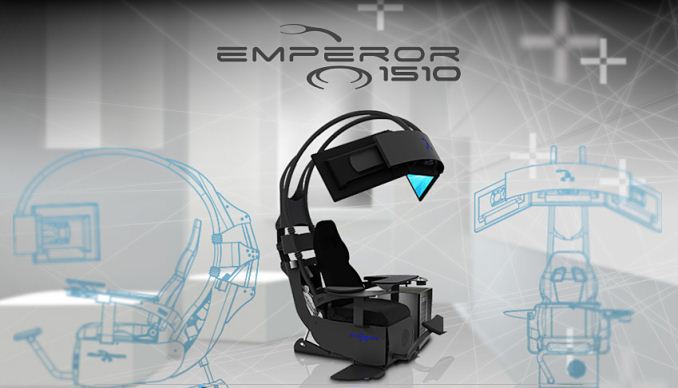









 Quote
Quote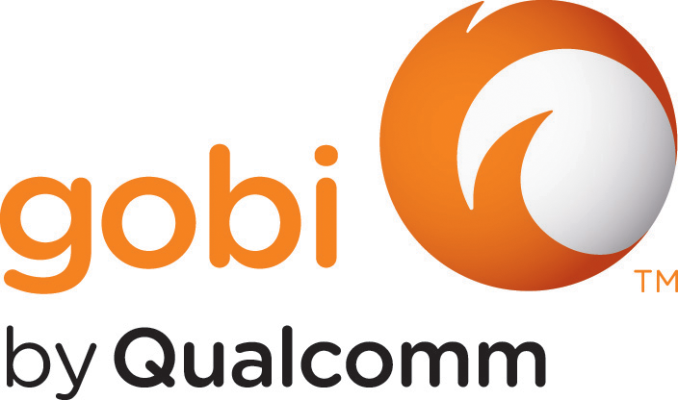
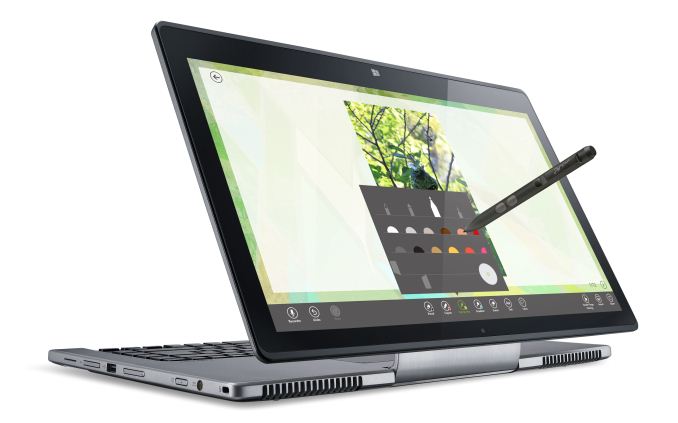
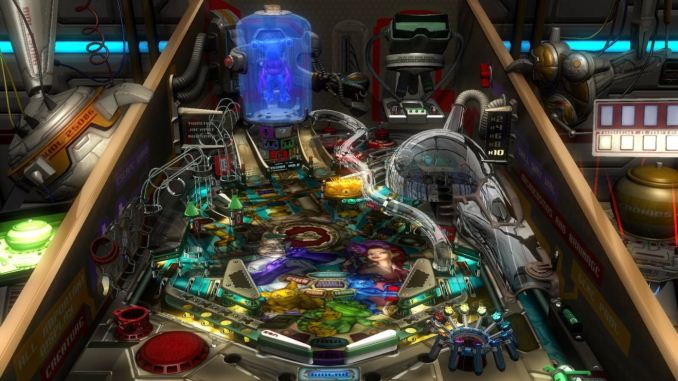
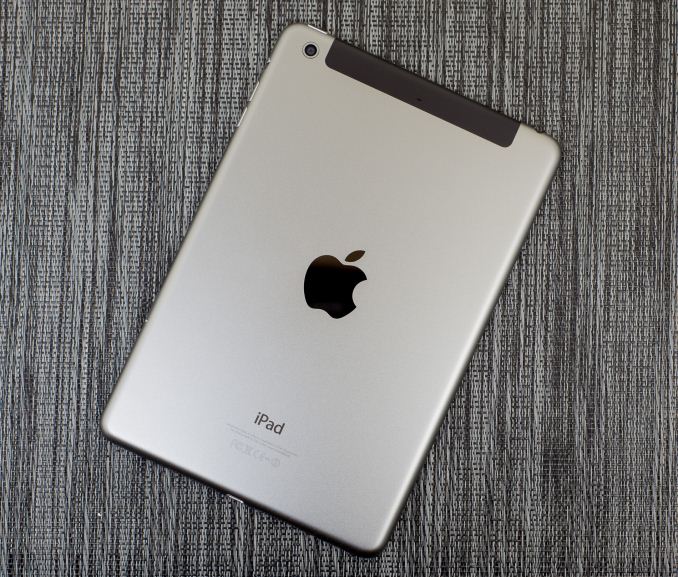



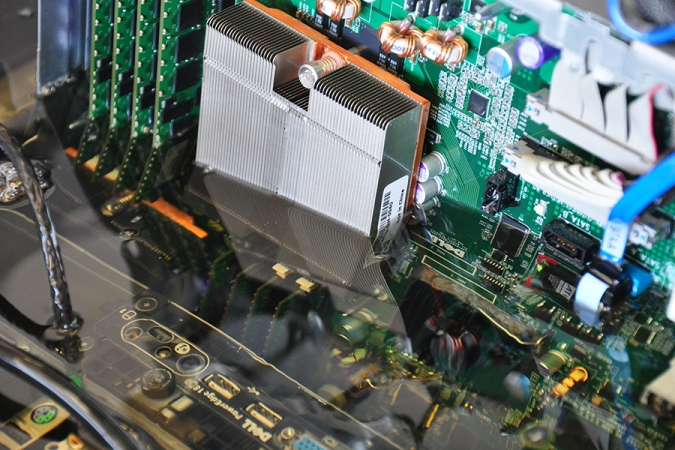
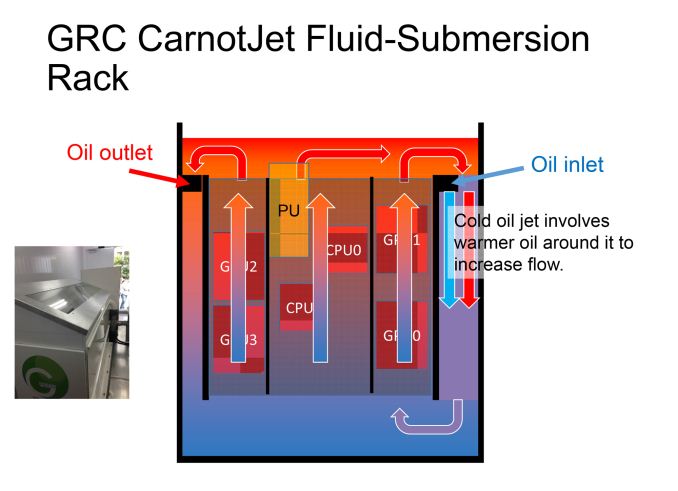

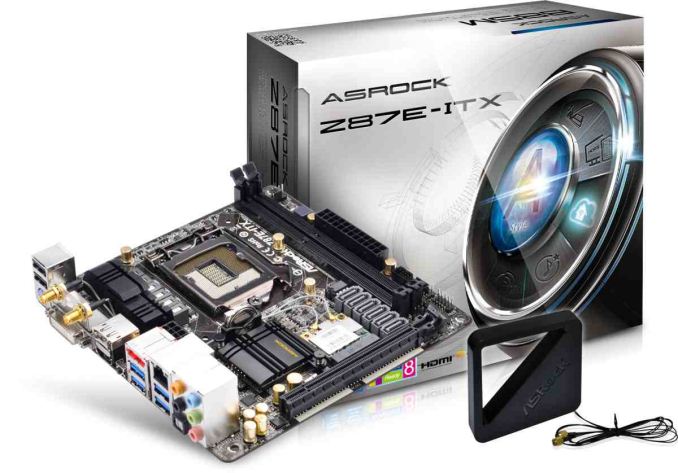
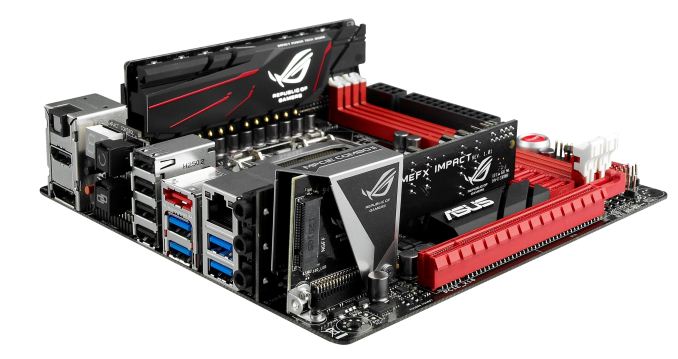
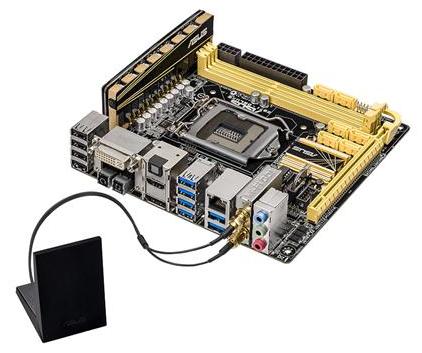
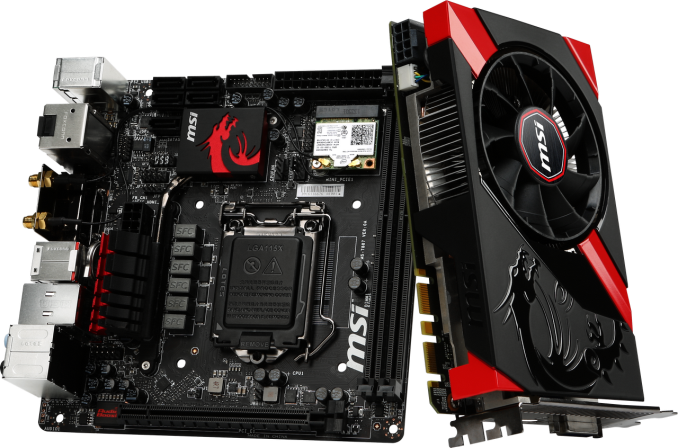

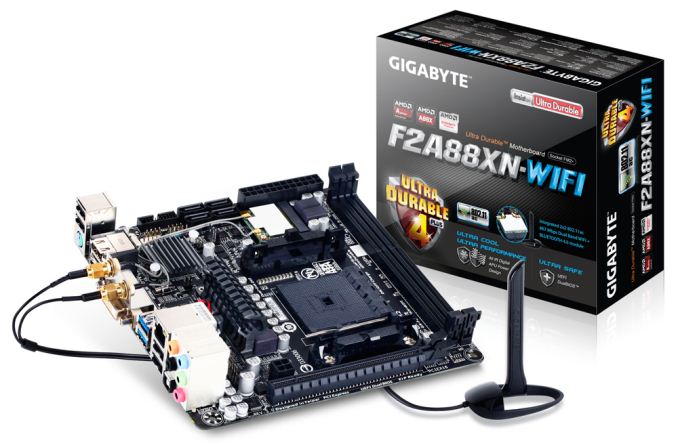
















Bookmarks